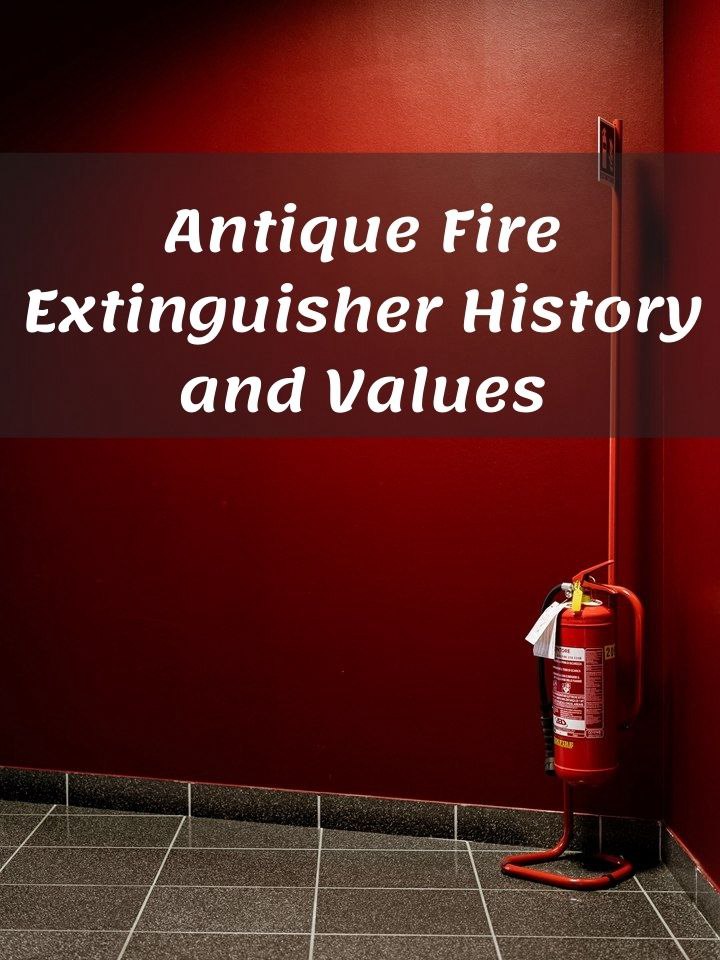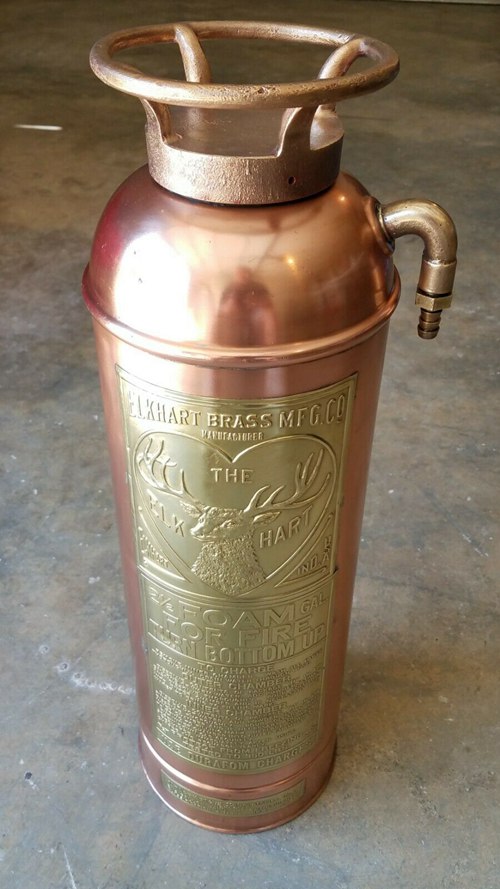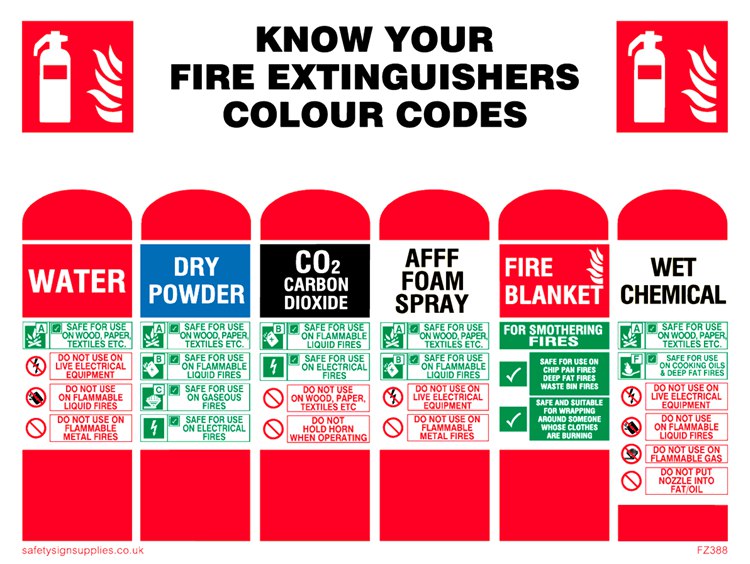Fire breakout cost massive loss of lives/property throughout history. Early extinguishers restrained small-scale fire to resolve the possibility of breakouts. But the invalid antique fire extinguishers have become a subject of well worth collectibles.
Consistent changes in design resulted in extensive variations since its invention. That’s where proper valuation of antique pieces demands comprehensive guidelines. Stay with the expert-suggested article on antique fire extinguisher values.
Table of Contents
What is Antique Fire Extinguisher?
Almost everybody is familiar with the active fire protection device. It’s a hand-held pressure vessel with a cylindrical shape to contain specific chemical agents. Continuous research on putting the fire out managed to found modern extinguishers by the 1700s.
- Chemist Ambrose Godfrey holds the very first patent in 1723 on fire extinguishers. But minimal efficiency failed the early attempt within years of application.
- British Captain George William Manby demonstrated his designed ‘Extincteur’ in 1816. And it was indeed provided the foundation of practical fire extinguishers.
- Several patents were issued across Europe as well as the USA by the end of the 1800s. Scientific approaches kept designing more efficient & eco-friendly extinguishers.
The available ones in the market are primarily vintage, originating in the 1900s. However, you can also find early designs from the 1800s at a reasonable cost. Timeline of fire extinguishers is quite fascinating to explore the individual designs for identification.
You can also look into the descriptive timeline of fire extinguishers at Fire Safety Advice Centre.
Antique Fire Extinguisher History
How to Identify Antique Fire Extinguisher?
Identification of classic models is somewhat easy with bizarre or out-of-practice design. But don’t let the prank antiques fool you with random or impractical details. You better remain focused on the expert-narrated identification factors.
· Extinguisher Class
There were different types of extinguishers for consideration throughout history. In fact, well-defined classes have a definite preference around the world. You can get an excellent glimpse of the classes from online content on fire extinguishers.
Five main classes are defined to coincide with the first origin & its condition. Let’s have a look at the fundamental classes with the respective fire details.
- Class A – Solid fire to burn dry wood, paper, clothes, or plastic.
- Class B – Fires to involve liquids like oil, petroleum, or alcohol.
- Class C – Fires involve gases like methane, ethanol, propane.
- Class D – Metallic fires on aluminum, steel, or cast-iron sheets.
- Class F – Auxiliary cooking lights to set the fire (cooking fat/oil).
Only a few antique extinguishers are genuine antiques with specified class A certification. The broad category primarily adorns the vintage or retro designs from the 1900s. Meanwhile, early 1800s fire extinguishers should barely have clarification on class.
· Production Details
The cylindrical body should contain a standard form of imprints regarding the brand. Of course, it’s difficult to understand the meaning of extra numbers or labels. Many 20th centuries manufacturers directly stamped the production date on surfaces.
Genuine antiques will barely provide anything clear on the serial or model number. And you’ll have to go through the entire structure to detect the original markings. Tracking the brand firsthand can let you determine the details of its production.
· Special Features
Specialty can appear in many distinctive, variable, uncertain forms with extinguishers. But you don’t need to spend much time on the concerning point either. Because the intended collectibles are now in existence at ridiculously higher market values.
The feature primarily concerns the extinguisher mechanism, efficiency & capacity. Likewise, special efforts on producing better outcomes initiated the rare designs. In addition, authentic provenance also falls under the category of simpler designs.
· Physical Appearance
Three specified versions of fire extinguishers are in existence from this perspective. And it should affect the overall market value.
- Antique Fire Grenade: It’s the deliberate predecessor of modern-day fire extinguishers. The design features an oval or circular ball to contain chemical agents.
- Antique Wheeled Fire Extinguisher: The monstrous version seems more like early fire trucks. Sheer size makes it almost impossible to check any regular display.
- Antique Fire Extinguisher: And that’s where the cylindrical design entered the picture. But classic versions were noticeably taller than its vertical diameter.
Not to mention, Antiques – Love to Know holds an excellent description on the individual part. And Antique Trader contains an in-depth description of antique fire grenades.
· Extinguishing Agent
It’s the extinguishing agent that has to put the fire out on the application. Early extinguishers were dependent on straightforward results from demonstrations. But continued experiments revealed many harmful by-products with certain agents.
Available antique models should contain either of the following extinguishing agents.
- Carbon Dioxide – The most common agent to make modern-day extinguishers. It displaces the air from the surface to suffocate the fire. And it remains applicable to every fire condition.
- Dry Powder – Bicarbonate slats of either sodium or potassium held the agent. It initiates a thermal ballast for flames to reduce the intensity. The application suffices class B fire to involve liquids.
- Foam – Water-based foaming agents can reduce the breakout from liquid burns. Light foam kept floating on the liquid to restrain contact. It’s another strategy to deal with class B breakout.
- Potassium Salts – Acetate, citrate, or bicarbonate held the composition. The fine mist can saponify the burning surface while reducing the flame. Potassium salts stand suitable for Class F fires.
- Water – It initiates the application of water jets directly on the burning surface. But some improved design contains special nozzle for spraying. And it’s the ultimate agent to restrain class A fires.
Rapid advancement in science developed many friendly agents in later decades. Likewise, you can’t consider the chemicals for genuine antique or vintage designs.
Wikipedia holds an elaborate page on the fire extinguisher to cover its extent. Again, you can narrow down the antique dealing through the exclusive tips on Safe-T.
How to Value Antique Fire Extinguishers?
Proper valuation remains essential for any antique product to obtain the best amount. There’s no need to focus on unnecessary points to confront the identity. However, professionals enlisted particular points for checkouts for estimation.
Let’s have a look at the foremost points to decide on fire extinguisher value.
Current Condition: Complete retention of the original outlook can provide more money. Faded or discolored antiques can’t meet the market expectations for sure. In addition, you need to check the extinguishing mechanism for movements.
Overall Specification: Year of production or current age matters significantly in valuation. Older models in good condition will require an additional amount. Of course, you should determine the cylinder material & its extinguishing agent.
Potential Damage: The containing cylinder mustn’t feature any crack, hole, or missing piece. Minimal rusts, chipping or bend can prove acceptable to some extent. Poor restoration or repair can set the value pretty low without second thoughts.
Actual Application: The customer/buyer needs to think of displaying or repurposing the model. Antique extinguisher can immediately catch the attention due to sheer size. Therefore, prepare plans ahead of purchasing the right design.
Market Response: Rarity gets important with any antique with no exception for fire extinguishers. Also, market demand as well as recent findings can influence the value. You must understand the client’s interest from buyer’s perspective.
Staying updated with the market facts can save you from unexpected losses against the investment. News, auctions, searches are the prolific methods to check on the market assessment.
Many think of appointing appraisals to save the troublesome valuation process. The idea stands okay but real experts on the antique fire extinguisher aren’t readily available. You must recognize the service for antique/vintage extinguishers before confirmation.
Additional Tips on Evaluation
Keeping in touch with the community, forum, or group can provide minor yet helpful suggestions. Still, we would like to figure out some extra info.
- Examine the extinguisher closely for chemical agents as residuals.
- Don’t press the empty cylinder without retaining its actual shape.
- Check the cylinder thoroughly for any disgusting or visible leaks.
- Lock the spraying or extinguishing mechanism for complete safety.
- Take proper care to hold the original shape, color & appearance.
- Skip any attempt to restore the surface smoothness at bent spots.
- Maintain the antique once in a while by unlocking the mechanism.
Extremely poor condition of extinguishers often calls for expensive restoration. In this case, you should understand the fundamentals of restoration for once.
Take Zammeti ‘Unwaffled’, Tube Restoration, Sam Wilkinson & Tysy Tube Restoration videos into account. You should look into the S.E.R. Safety, Eighty One vintage for extra ideas.
Continue exploring the internet for resources on fire extinguisher’s market value. Checking the available options for sale sounds really good to deal with the pricing.
You may start digging the authentic collections on sites like eBay, Collectors Weekly & Kijiji. Also, there are reasonable collectibles for checkout at Bath Antiques Online & Gumtree.
Final Words
Not many resources on antique fire extinguisher values make it one disruptive topic. But the aforementioned guidelines should help you overcome the issue. Start implementing the guide to find out the ultimate value of your preference.









![Vintage Schwinn Bikes: [Types, Identification, and Values]](https://www.txantiquemall.com/wp-content/uploads/2022/05/5.-Schwinn-1967-Ramshorn-Fastback-Stingray-Sky-Blue-vtg-600x450.jpg)
